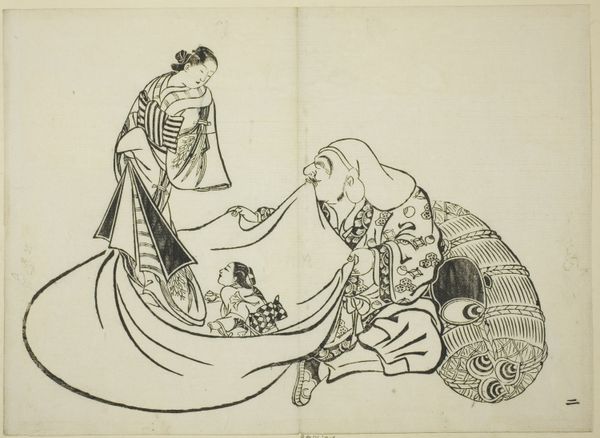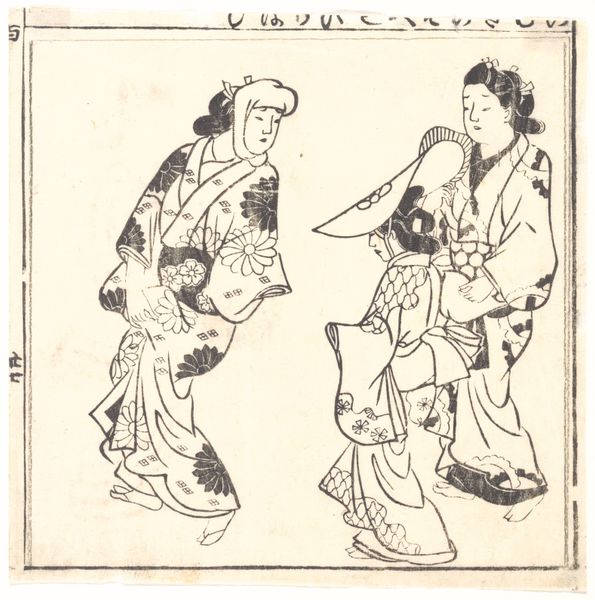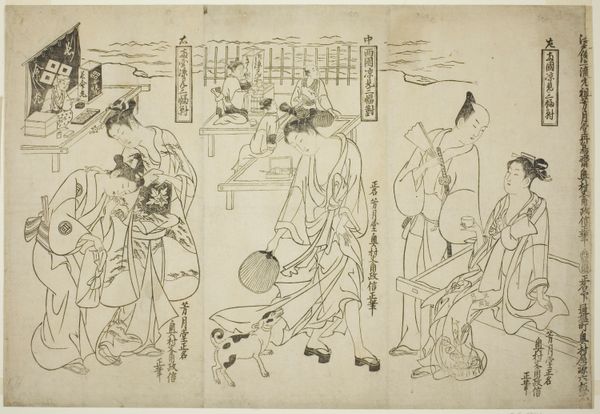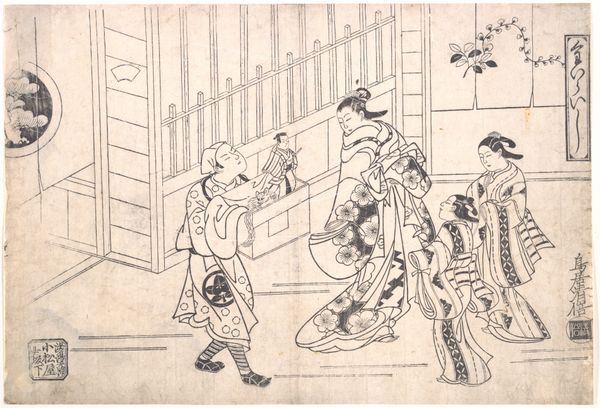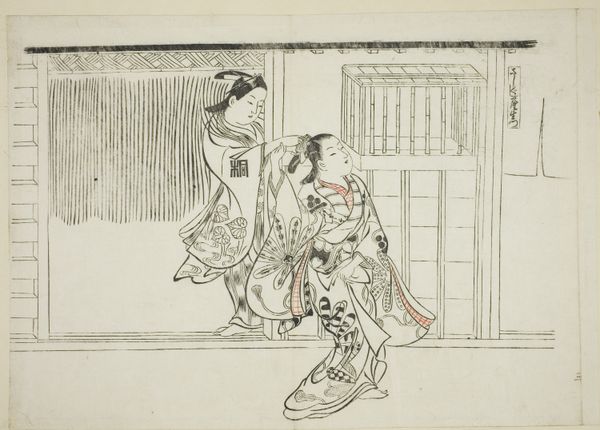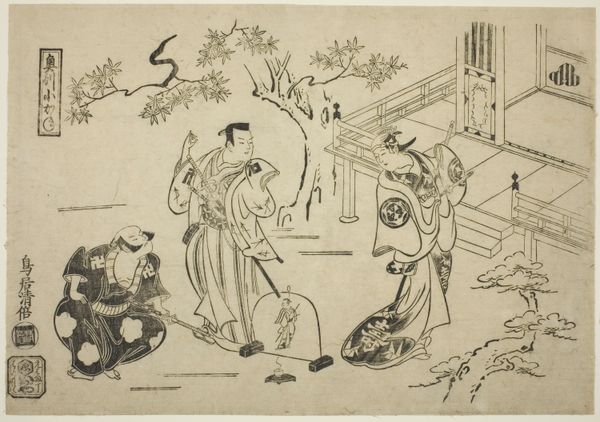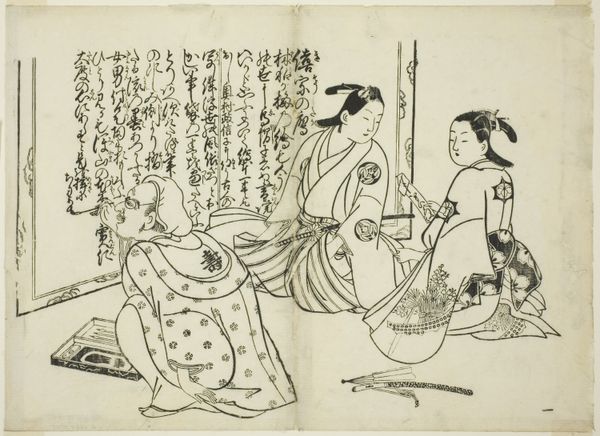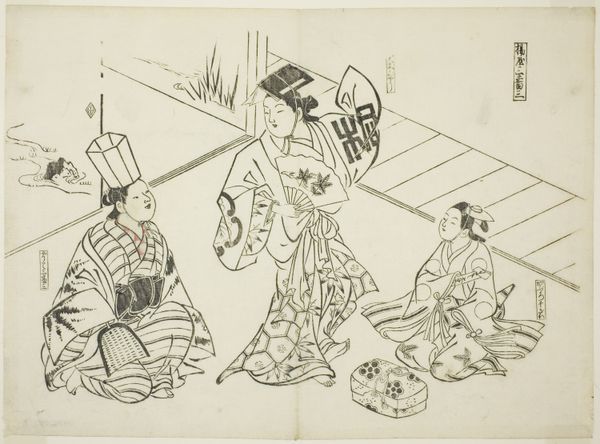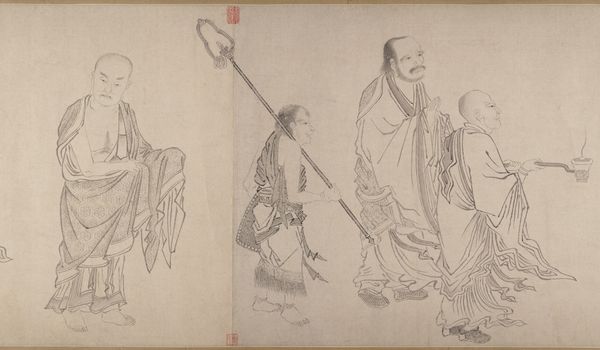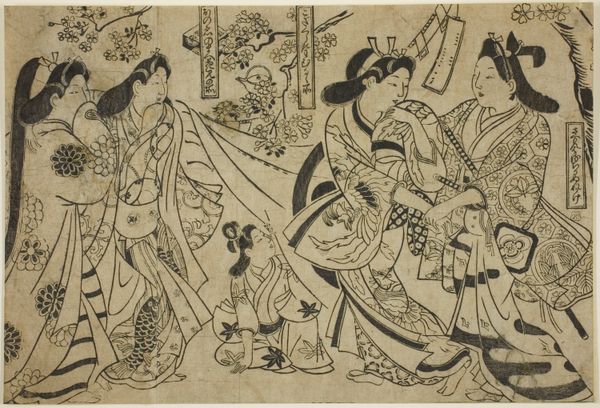
The Roles Reversed, no. 12 from a series of 12 prints c. 1708
0:00
0:00
print, paper, ink, woodcut
#
narrative-art
# print
#
asian-art
#
ukiyo-e
#
figuration
#
paper
#
ink
#
woodcut
#
line
#
genre-painting
Dimensions: 26.8 × 37.9 cm
Copyright: Public Domain
Curator: Looking at this striking woodcut, I find myself immediately thinking of the performance of social roles. Editor: Performance is key, isn’t it? The strong linear quality gives it an unfinished feel, like watching the mechanics behind stagecraft. Curator: Exactly. This is Okumura Masanobu’s “The Roles Reversed, no. 12 from a series of 12 prints,” made around 1708. Ukiyo-e prints like this offer us a window into the shifting social dynamics of Edo-period Japan. Editor: What fascinates me are the tools and means of its making. It’s a print, right, meaning it was conceived for reproduction and dissemination, engaging a broader populace than traditionally "high" art might reach. We must remember that making a woodblock print such as this involves various skilled artisans in production - from the artist to the carver and printer who bring the image to life on paper using ink. Curator: Absolutely. And “roles reversed” signals a world in flux. You have figures coded through clothing, bearing signifiers that hint at changing class structures, anxieties about social mobility, and even nascent ideas of gender roles that challenge the status quo. Editor: The thinness of the lines themselves even emphasizes this social unease— the image is not weighty, solid but light, quickly consumed. Were these meant as inexpensive goods meant for everyday use and enjoyment or luxury products to be collected? Curator: They would have been relatively inexpensive, but highly valued. Ukiyo-e allowed for cultural commentary to reach new audiences. What do you make of the composition itself? Editor: Well, note the relatively minimal use of ink: we see an intentional restriction of materials employed during printing. It results in a stark quality, making us reflect upon what is shown, versus what remains unsaid. The figures feel caught in a specific action that is unfolding before our very eyes as they take a stroll from left to right across the frame. It feels almost incomplete, waiting to be resolved Curator: Yes! The “unfinished” quality works in tandem with the theme—social roles aren't static; they're in process. They're being renegotiated in every interaction. In this particular artwork, the dynamic composition embodies tensions felt in Edo society through its visual immediacy. Editor: It also makes me appreciate the skill and ingenuity employed to get here by examining each layer of labor employed and questioning whether the materials themselves—the ink, paper, and woodcut—were of local, domestic origins. Now that's social context. Curator: Exactly! Considering its place within art history allows one to appreciate a broader range of viewpoints towards the complex network of cultural, economical, and gendered structures operating at any point in time, in any geographic setting. Editor: Seeing the evidence of the making and labor woven into such a thought-provoking cultural artifact reveals deeper meanings.
Comments
No comments
Be the first to comment and join the conversation on the ultimate creative platform.

